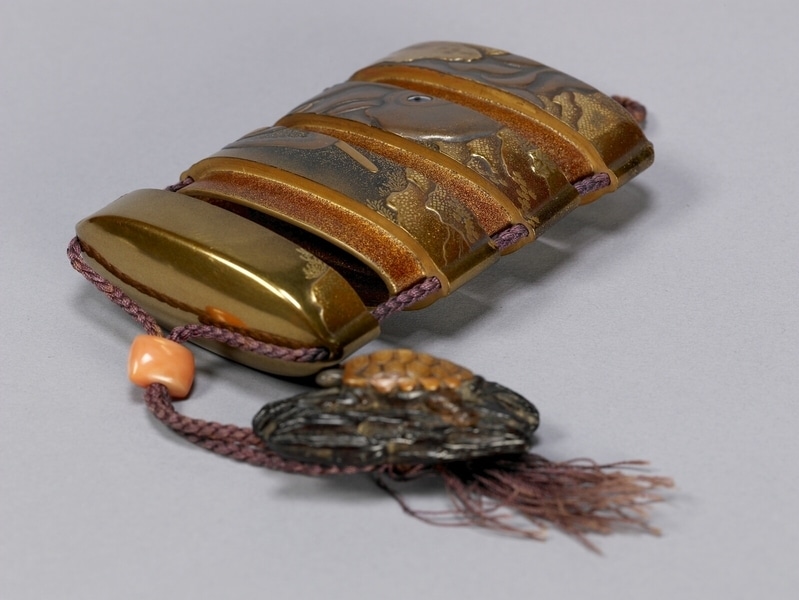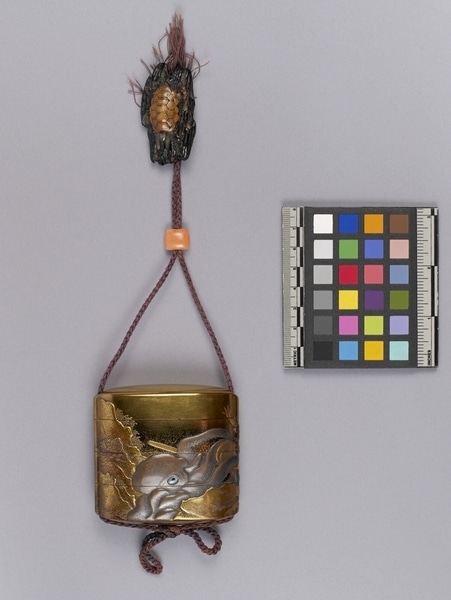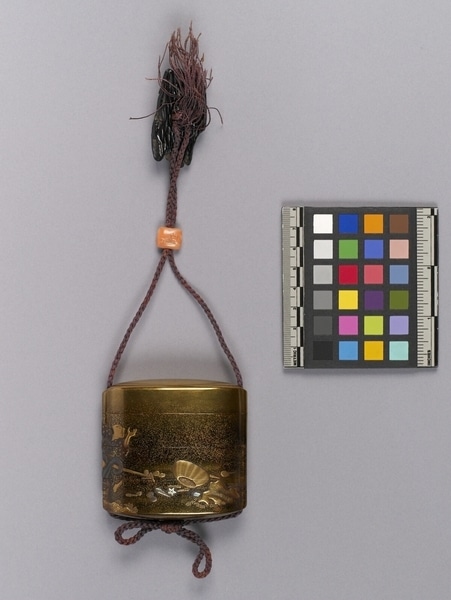Carrying Case Item Number: N2.967 from the MOA: University of British Columbia



Description
Gold and red lacquered, oval-shaped, carrying case known as inrō (印籠) with five fitted sections stacked vertically. A fibre cord tied at the base is threaded through two channels on either side, holding the five parts together. The purple cord extends above the top of the box, with the two ends held together by an orange, cylindrical ojime and a wooden netsuke (根付) with a carved turtle on it. The body of the case has imagery all around the sides of a large brown octopus with a blue eye, a man with a spear, and various sea stars and shells, on a speckled gold background. The interior of the four sections are speckled red-orange and gold.
History Of Use
Used by men, attached to an obi sash. Originally used to carry seals, but later other small items, such as medicine. During the Edo period (1603–1868), they became popular as a man’s accessory, without carrying anything inside. Later they become collectibles, from the late Edo period onwards.
Item History
- Made in Japan
- Collected between 1911 and 1914
- Owned by James Fyfe-Smith and Mary G. Fyfe-Smith
- Owned by Florence Fyfe-Smith before 1957
- Received from Florence Fyfe-Smith (Donor) during 1957
What
Who
- Culture
- Japanese
- Previous Owner
- James Fyfe-Smith, Mary G. Fyfe-Smith and Florence Fyfe-Smith
- Received from
- Florence Fyfe-Smith (Donor)
Where
- Holding Institution
- MOA: University of British Columbia
- Made in
- Japan
When
- Collection Date
- between 1911 and 1914
- Ownership Date
- before 1957
- Acquisition Date
- during 1957
Other
- Condition
- good
- Current Location
- Case 79